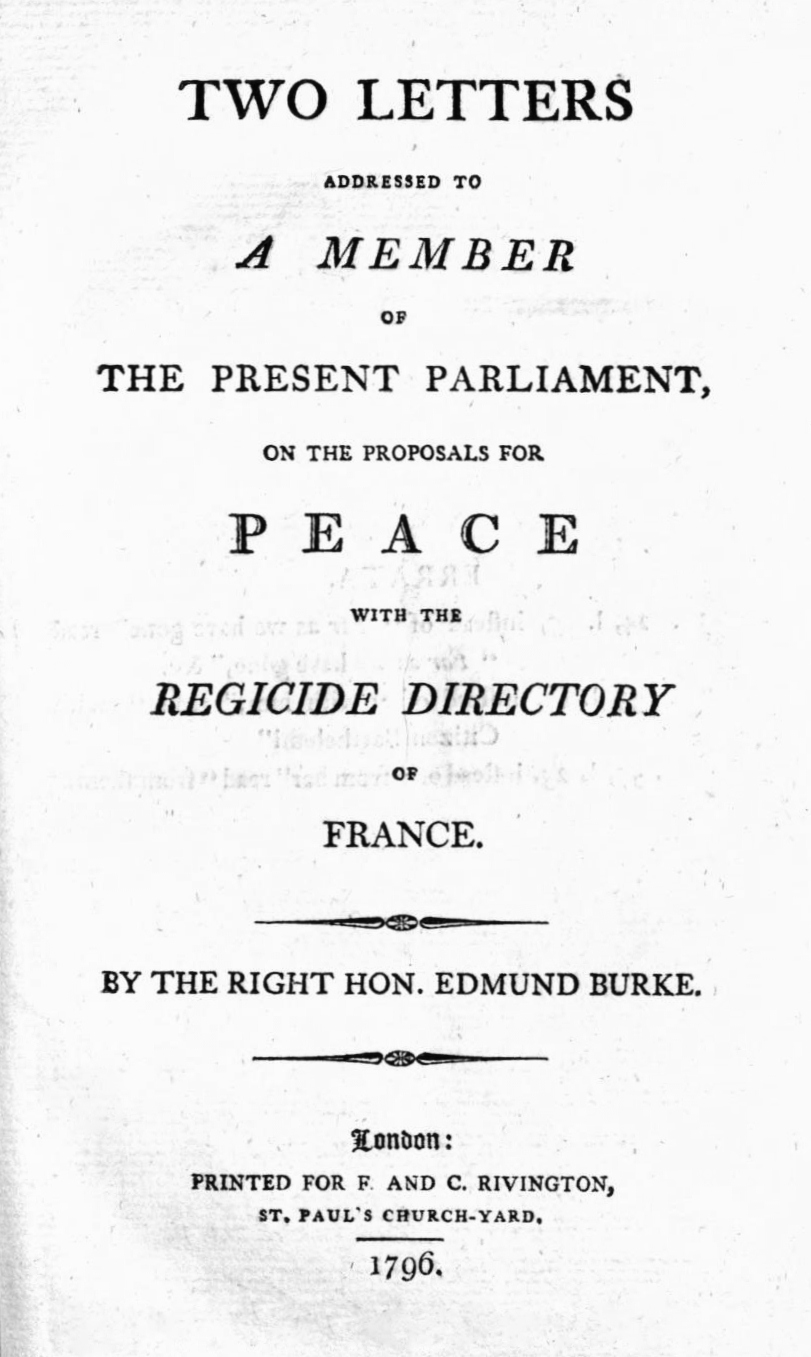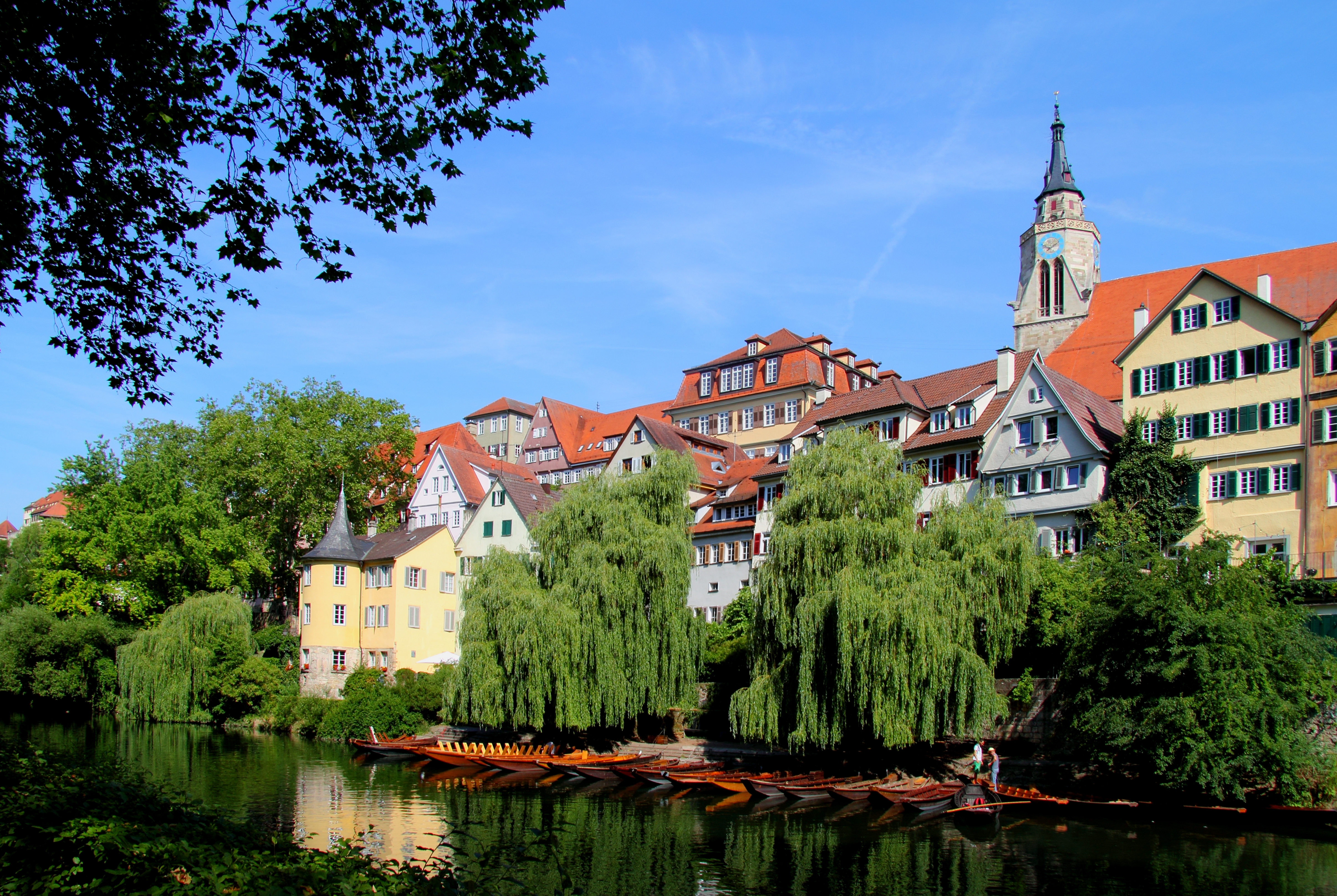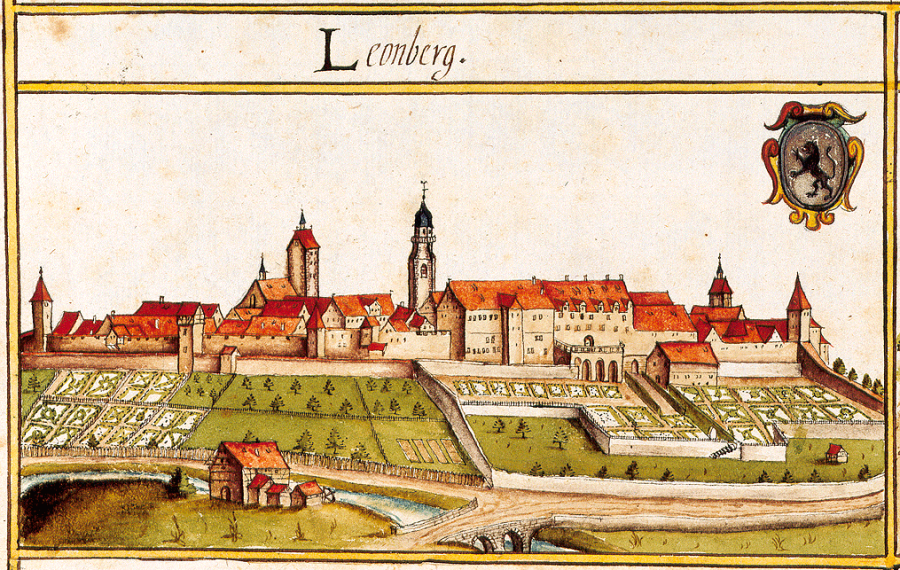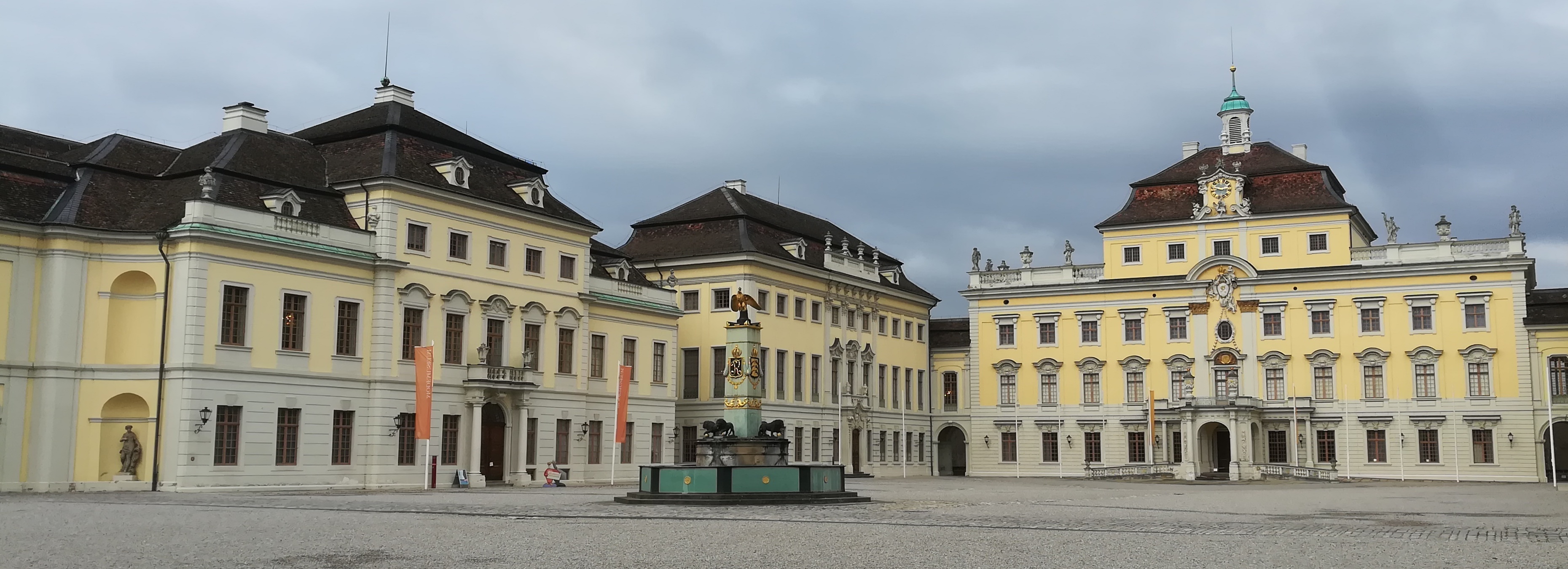|
Estates Of Württemberg
The Estates of Württemberg (''Württembergische Landstände'') was the Estates of the Duchy of Württemberg, lasting from 1457 to 1918 except for 1802-15. After the creation of the Kingdom of Württemberg the 1815 reestablished estates became a bicameral parliament by 1819. The parliament raised taxes for the counts, dukes and then kings of Württemberg, and discussed matters of public policy more widely in its later years. Chambers The parliament comprised two chambers between 1819–1918: * The "Kammer der Standesherren" from the hereditary nobility or "First Chamber", and * The "Kammer der Abgeordneten" from the commoners It was succeeded in 1919-33 by the ''Landtag'' of the "Free People's State of Württemberg", a part of the Weimar Republic. History Eberhard III and his Council c.1400 As the power of the House of Württemberg grew, inevitably this involved "Diets" - councils - meeting with the Count to debate on public policy. The first formal assembly of the Estates, ... [...More Info...] [...Related Items...] OR: [Wikipedia] [Google] [Baidu] |
Ulrich V, Count Of Württemberg
Ulrich V of Württemberg called ''"der Vielgeliebte"'' (the much loved) (1413Detlev Schwennicke: ''Europaische Stammtafeln'', New Series, Vol. I/2, Tafel 256. – 1 September 1480, in Leonberg), Count of Württemberg. He was the younger son of Count Eberhard IV and Henriette of Mömpelgard. Life After the early death of his father, his mother, together with the Württembergian councils, took over the guardianship for Ulrich and his older brother Ludwig I. Ludwig reached maturity in 1426 and took rule in his own hands, until his brother Ulrich in 1433 was admitted to co-rule. After some years of common government Ulrich wed Margaret of Cleves and put through the division of the county. This was confirmed 23 April 1441. Ulrich received the eastern and northern parts with the capital in Stuttgart. Ludwig the western and southern land part with the capital in Urach, as well as the territories in Alsace . The division which had been limited originally on four years was made perman ... [...More Info...] [...Related Items...] OR: [Wikipedia] [Google] [Baidu] |
List Of Presidents Of The Second Chamber Of The Estates Of Württemberg
Presidents of the Second Chamber of the Estates of Württemberg Sources *Raberg, Frank (editor): ''Biographisches Handbuch der württembergischen Landtagsabgeordneten 1815-1933'', Kohlhammer Verlag, Stuttgart 2001 {{DEFAULTSORT:List of Presidents of the Second Chamber of the Estates of Wurttemberg Political history of Germany Württemberg ... [...More Info...] [...Related Items...] OR: [Wikipedia] [Google] [Baidu] |
List Of Presidents Of The First Chamber Of The Estates Of Württemberg ...
List of presidents of the First Chamber of the Estates of Württemberg Sources *Raberg, Frank (editor): ''Biographisches Handbuch der württemberbergische Lantagsabgeordneten 1815-1933'', Kohlhammer Verlag, Stuttgart 2001 {{DEFAULTSORT:List of Presidents of the First Chamber of the Estates of Wurttemberg Political history of Germany Württemberg Württemberg ( ; ) is a historical German territory roughly corresponding to the cultural and linguistic region of Swabia. The main town of the region is Stuttgart. Together with Baden and Hohenzollern, two other historical territories, Württ ... [...More Info...] [...Related Items...] OR: [Wikipedia] [Google] [Baidu] |
Letters On A Regicide Peace
''Letters on a Regicide Peace'' or ''Letters ... on the Proposals for Peace with the Regicide Directory of France'' were a series of four letters written by Edmund Burke during the 1790s in opposition to Prime Minister William Pitt's seeking of peace with the revolutionary French Directorate. It was completed and published in 1796. Burke had already written the popular ''Reflections on the Revolution in France'' in late 1790, and by 1795 many of his gloomier predictions had come true. Background By January 1796, Burke was finishing his ''Letter on a Regicide Peace'', and parts of it were already printed. However, the work was delayed and it was published 20 October 1796, together with the second letter, as ''Two Letters on a Regicide Peace''. An unauthorized version, printed by John Owen, a printer who had worked on the letters earlier in the year, appeared the day before Burke's edition was published. Burke's letters were popular, and the work went into 11 editions by the end ... [...More Info...] [...Related Items...] OR: [Wikipedia] [Google] [Baidu] |
Frederick I Of Württemberg
, image = Seele-Friedrich I..jpg , caption = Portrait by Johann Baptist Seele , birth_date = , birth_place = Treptow an der Rega, Prussia (now Trzebiatów, Poland) , death_date = , death_place = Stuttgart, Kingdom of Württemberg, Germany , burial_date = 1 November 1816 , burial_place = Schlosskirche, Ludwigsburg, Germany , father = Frederick II Eugene, Duke of Württemberg , mother = Sophia Dorothea of Brandenburg-Schwedt , coronation = 1 January 1806 , succession = Duke/Elector/King of Württemberg , reign = 22 December 1797 – 30 October 1816 , predecessor = Frederick II Eugene , successor = William I , spouse = , issue = , religion = Lutheranism Frederick I (german: Friedrich Wilhelm Karl; 6 November 1754 – 30 October 1816) was the ruler of Württemberg from 1797 to his death. He was the last Duke of Württemberg from 1797 to 1803, then the first and only Elector of Württemberg from 1803 to 1806, ... [...More Info...] [...Related Items...] OR: [Wikipedia] [Google] [Baidu] |
Edmund Burke
Edmund Burke (; 12 January New Style">NS/nowiki> 1729 – 9 July 1797) was an Anglo-Irish people">Anglo-Irish Politician">statesman, economist, and philosopher. Born in Dublin, Burke served as a member of Parliament (MP) between 1766 and 1794 in the House of Commons of Great Britain with the Whig Party. Burke was a proponent of underpinning virtues with manners in society and of the importance of religious institutions for the moral stability and good of the state. These views were expressed in his ''A Vindication of Natural Society''. He criticised the actions of the British government towards the American colonies, including its taxation policies. Burke also supported the rights of the colonists to resist metropolitan authority, although he opposed the attempt to achieve independence. He is remembered for his support for Catholic emancipation, the impeachment of Warren Hastings from the East India Company, and his staunch opposition to the French Revolution. In his '' R ... [...More Info...] [...Related Items...] OR: [Wikipedia] [Google] [Baidu] |
Treaty Of Tübingen
The Treaty of Tübingen was a treaty signed in the Duchy of Württemberg between its Duke, Ulrich, and the Estates of Württemberg. The treaty concluded the Poor Conrad revolt against Ulrich and annulled his recent taxes on the populace of the Duchy, while the Estates of his realm agreed to liquidate his substantial debts. Background Württemberg was a minor state in the Holy Roman Empire that had existed as a County from the late 11th century. Its rulers grew increasingly powerful over the Middle Ages by accumulating territory in Swabia and Imperial rights. By the 1270s, it was able to scuttle the efforts of the first Habsburg Holy Roman Emperor, Rudolph I, to restore the Duchy of Swabia. After acquiring Teck, seat of the defunct Duke of Teck and formerly a possession of the House of Zähringen, Württemberg had a case for elevation to ducal status. In 1495, at the Diet of Worms, Emperor Maximilian I made Württemberg a Duchy in what would be the final such elevation of an I ... [...More Info...] [...Related Items...] OR: [Wikipedia] [Google] [Baidu] |
Eberhard V, Count Of Württemberg
Eberhard is an old Germanic name meaning the strength or courage of a wild boar. People First name *Eberhard of Friuli (815–866), Duke and key figure in the Carolingian Empire *Eberhard of Béthune (died 1212), Flemish grammarian *Eberhard I, Duke of Württemberg (1445–1496) *Eberhard II, Count of Württemberg (after 1315–1392) *Eberhard I, Count of Bonngau (died 937) *Eberhard III, Duke of Franconia (''ca'' 885–939) *Eberhard (Archbishop of Trier) (1010–1066) *Eberhard of Salzburg (died 1164), Bishop of Salzburg and saint *Eberhard Anheuser (1806–1880), Soap and candle maker, co-founder of Anheuser-Busch *Eberhard Weber (* 1940), German jazz musician and composer Last name *Eberhard family, a prominent Swiss industrialist family (Eberhard & Co.) from Bern whose origin has been traced back to the 10th century **George-Emile Eberhard (1868–1936), founder of Eberhard & Co **George Eberhard, George-Emile's son and heir **Maurice Eberhard, George-Emile's son and heir *Chr ... [...More Info...] [...Related Items...] OR: [Wikipedia] [Google] [Baidu] |
Tübingen
Tübingen (, , Swabian: ''Dibenga'') is a traditional university city in central Baden-Württemberg, Germany. It is situated south of the state capital, Stuttgart, and developed on both sides of the Neckar and Ammer rivers. about one in three of the 90,000 people living in Tübingen is a student. As of the 2018/2019 winter semester, 27,665 students attend the Eberhard Karls University of Tübingen. The city has the lowest median age in Germany, in part due to its status as a university city. As of December 31, 2015, the average age of a citizen of Tübingen is 39.1 years. The city is known for its veganism and environmentalism. Immediately north of the city lies the Schönbuch, a densely wooded nature park. The Swabian Alb mountains rise about (beeline Tübingen City to Roßberg - 869 m) to the southeast of Tübingen. The Ammer and Steinlach rivers are tributaries of the Neckar river, which flows in an easterly direction through the city, just south of the medieval old ... [...More Info...] [...Related Items...] OR: [Wikipedia] [Google] [Baidu] |
Leonberg
Leonberg (; swg, Leaberg) is a town in the German federal state of Baden-Württemberg about to the west of Stuttgart, the state capital. About 45,000 people live in Leonberg, making it the third-largest borough in the rural district (''Landkreis'') of Böblingen (after Sindelfingen and Böblingen to the south). Leonberg is most famous for its picturesque market square, the centuries-old annual horse market, its past role as the seat of one of Württemberg's first parliaments, and the Pomeranzen Garden – Germany's only remaining terraced garden which dates back to the late Renaissance. Geography Leonberg lies on the east bank of the Glems River on the lower slopes of a prominent hill known locally as Engelberg (literally: "Angel Hill"). The Glems flows into Leonberg from the southeast before turning northwest until it reaches the district of Eltingen. Here, it turns northeast into the western part of the old town, carving its way along the valley to the district of Höfi ... [...More Info...] [...Related Items...] OR: [Wikipedia] [Google] [Baidu] |
Duchy Of Württemberg
The Duchy of Württemberg (german: Herzogtum Württemberg) was a duchy located in the south-western part of the Holy Roman Empire. It was a member of the Holy Roman Empire from 1495 to 1806. The dukedom's long survival for over three centuries was mainly due to its size, being larger than its immediate neighbors. During the Protestant Reformation, Württemberg faced great pressure from the Holy Roman Empire to remain a member. Württemberg resisted repeated French invasions in the 17th and 18th centuries. Württemberg was directly in the path of French and Austrian armies who were engaged in the long rivalry between the House of Bourbon and the House of Habsburg. In 1803, Napoleon raised the duchy to be the Electorate of Württemberg of the Holy Roman Empire. On 1 January 1806, the last Elector assumed the title of King of Württemberg. Later that year, on 6 August 1806, the last Emperor, Francis II, abolished (de facto) the Holy Roman Empire. Geography Much of the territor ... [...More Info...] [...Related Items...] OR: [Wikipedia] [Google] [Baidu] |





